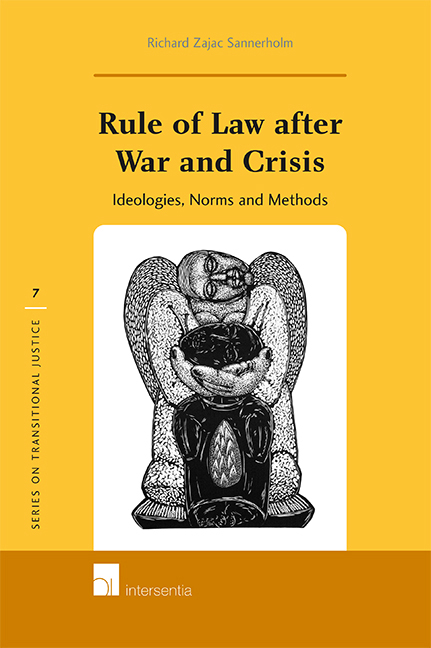7 - A Rule of Law for State-Building
Published online by Cambridge University Press: 16 December 2020
Summary
CASUAL ASSUMPTIONS AND STANDARD PRESCRIPTIONS
From the examination of how international actors treat the rule of law at policy and ‘field’ level, a distinct model emerges: rule of law after war and crisis. The distinct character of this model is the adaptability to post-war and crisis situations and how the rule of law has been made to ‘fit’ established practices. Before the rule of law became an architectonic ideal, justice sector reforms were already standard components of crisis management. When the UN and other international agencies eventually adopted the rule of law as an overriding objective, they did so without clarifying what it would mean in relation to an already established practice. Thus, organisations previously focusing on police and law enforcement reform, judicial reform, or criminal law reform started to rename and re-phrase activities under a rule of law banner. This means that the rule of law model that has emerged is fragmented and sectorised with little overall coherence. It makes more sense to speak of rule of law reform in the judicial, law enforcement or human rights sector, than general support to rule of law as a systemic concept.
The casual assumptions constituting the rule of law model in the aftermath of war and crisis would not be a cause for worry, lest it be shown that they create contradiction, confusion and goal displacement. Considering the challenges facing rule of law reform, the concept appears to have become, at best, nothing more than an “honorific title for an amalgam of values”. At worst, the rule of law resembles the confusion characterising law in war-torn societies, and the reason why international assistance is needed in the first place.
The methods employed in rule of law reform testify to the attendant conceptual difficulties. International agencies mostly work within three broad categories – legal and constitutional reform; institution-building; and accesscreation. While the methods vary depending in part on the particular mandate of the international actors concerned, some common denominators of rule of law reform are possible to identify.
- Type
- Chapter
- Information
- Rule of Law after War and CrisisIdeologies, Norms and Methods, pp. 235 - 246Publisher: IntersentiaPrint publication year: 2012



